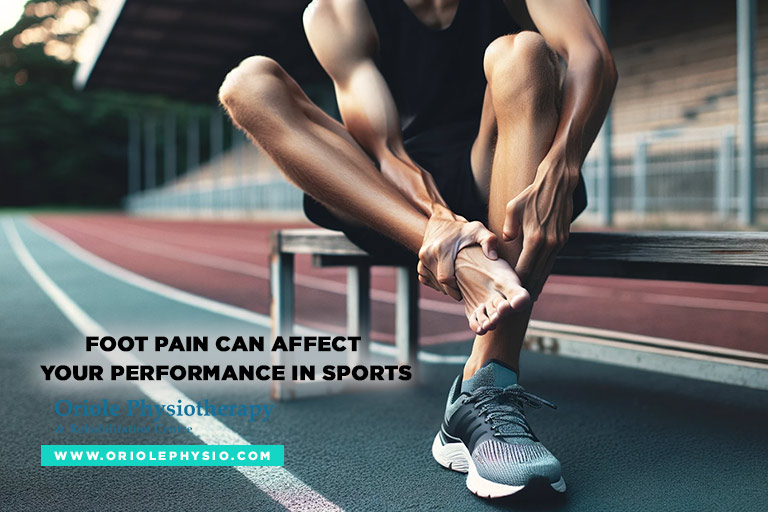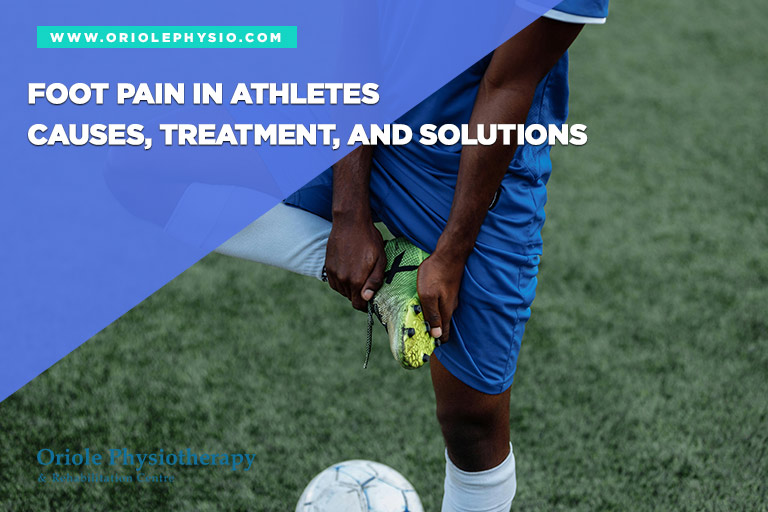Foot Pain in Athletes: Causes, Treatment, and Solutions
Foot pain in athletes is a prevalent and disruptive issue that can significantly hinder performance and overall well-being. Sports-related foot injuries can arise from a myriad of factors, including overuse injuries, biomechanical anomalies, and the use of inappropriate footwear. In this comprehensive article, we will delve into the multifaceted causes of foot pain in athletes and explore effective treatment and prevention strategies.
Common Foot Pain Causes in Athletes

Athletes often push their bodies to the limits, striving for peak performance. However, with the pursuit of excellence comes the risk of injury. Understanding and addressing the common foot injuries in sports is vital not only for an athlete’s performance but also for their long-term foot health and well-being.
Overuse Injuries
Overuse injuries in sports are a recurring source of foot pain in athletes. These injuries occur when the foot is subjected to repetitive stress, leading to microtrauma and tissue damage. Key overuse injuries encompass stress fractures, plantar fasciitis, and Achilles tendonitis.
-
-
Stress Fractures
-
Stress fractures manifest as minuscule cracks in the bones of the foot and frequently afflict athletes engaged in high-impact sports. The relentless demands of activities such as running and jumping can place substantial strain on the bones, resulting in stress fractures.
-
-
Plantar Fasciitis
-
Plantar fasciitis is characterized by the inflammation of the plantar fascia, a robust band of connective tissue running along the underside of the foot. It stands as a common source of heel pain in athletes, especially among runners.
-
-
Achilles Tendonitis
-
The Achilles tendon, integral for ankle mobility, is susceptible to inflammation and pain, particularly in athletes participating in activities requiring repetitive ankle movement, such as sprinting or jumping.
Improper Footwear
The selection of inappropriate footwear during sports can significantly contribute to foot pain. Ill-fitting or inadequate shoes can precipitate discomfort and injuries, hampering an athlete’s performance.
Biomechanical Issues
Biomechanical abnormalities, such as excessive pronation (inward rolling of the foot) or supination (outward rolling of the foot), can heighten the risk of foot pain. Athletes with flat feet or high arches may be particularly susceptible to these issues.
Athlete-Specific Factors
Factors related to an athlete’s training intensity and the nature of the playing surface can also play pivotal roles in the development of sports-specific foot pain. Excessive training without sufficient rest can lead to overuse injuries. Additionally, the type of surface on which an athlete trains or competes can significantly influence the stress experienced by the foot.
Diagnosis and Assessment
Professional evaluation is imperative for the precise diagnosis and assessment of the causes of foot pain in athletes. Diagnostic tests, including X-rays and MRI scans, may be necessary to pinpoint specific injuries or underlying conditions. Furthermore, it is essential to consider contributing factors, such as the athlete’s training regimen and biomechanical idiosyncrasies, in the assessment process.
Foot Pain Treatment and Solutions for Athletes

Effectively addressing foot pain in athletes necessitates a comprehensive approach that tailors interventions to the athlete’s unique condition and requirements. Some common treatments and solutions encompass:
1. Rest and Recovery
Rest constitutes the initial step in the healing process for overuse injuries. Athletes may need to temporarily reduce their training or activity levels to allow for proper healing.
2.Physiotherapy and Rehabilitation
Physiotherapy in North York is a pivotal component of recovery, aiding athletes in regaining strength, flexibility, and mobility. Rehabilitation exercises are customized to cater to the athlete’s specific condition and performance goals.
3.Custom Orthotics and Footwear
Orthotics, which are custom-made shoe inserts, can provide invaluable support and address biomechanical anomalies. Selecting appropriate athletic footwear is equally critical in mitigating foot pain.
4.Strength and Conditioning
Strength and conditioning programs are designed to target weak muscles and enhance overall foot and ankle stability, thus diminishing the risk of injury.
5.Nutritional Considerations
Nutrition plays a pivotal role in both injury recovery and prevention. Athletes should maintain a well-balanced diet to sustain the physical demands of their sports.
Prevention Strategies
Preventing foot pain proves more efficacious than treating it. Athletes can benefit from:
-
- Incorporating proper warm-up and cool-down routines
- Choosing suitable footwear tailored to their specific sport
- Focusing on technique refinement under professional coaching
Foot pain in athletes is a prevalent issue encompassing a myriad of potential causes, ranging from overuse injuries and biomechanical abnormalities to improper footwear. Seeking professional diagnosis and treatment is indispensable for achieving a timely recovery. Prioritizing both athletic performance and foot health is crucial to both professional athletes and recreational sports enthusiasts.
At Oriole Physiotherapy & Rehabilitation Centre, we assist athletes in their journey to recover from foot pain and injuries. If you are currently experiencing foot pain, do not hesitate to reach out to us at (416) 221 0772 or fill out our convenient contact form on our website. Our experienced team of physiotherapists and sports injury professionals is dedicated to helping you regain your mobility and excel in the sports you are passionate about. Don’t let foot pain hinder your performance—visit our foot clinic in North York for personalized care and support.
Frequently Asked Questions (FAQs)
-
-
What is the role of footwear in preventing foot injuries in sports?
-
Proper footwear is essential in preventing foot injuries. Shoes should provide adequate support, cushioning, and stability for the specific sport or activity. Ill-fitting or worn-out shoes can increase the risk of injuries.
-
-
Are there any preventive measures to reduce the risk of Achilles tendonitis in sports?
-
Yes, preventive measures include proper warm-up and cool-down routines, stretching and strengthening exercises for the calf muscles, and gradual progression of training intensity. Additionally, athletes should pay attention to their running or sports technique.
-
-
Can athletes with flat feet participate in sports without experiencing foot pain?
-
Yes, athletes with flat feet can participate in sports. However, they may benefit from custom orthotics or proper footwear to provide arch support and reduce the risk of foot pain and injuries.
-
-
How important is early intervention for foot injuries in athletes?
-
Early intervention is crucial for foot injuries in athletes. Delaying treatment can lead to more severe issues and longer recovery times. Seeking prompt medical evaluation and following a treatment plan can expedite healing and reduce the risk of chronic problems.
-
-
Is physical therapy necessary for all foot injuries in athletes?
-
Physical therapy is often beneficial for foot injuries, but its necessity depends on the injury’s severity and individual circumstances. A qualified healthcare professional can assess the need for physical therapy and recommend the appropriate treatment plan.
-
-
How can athletes balance the desire to perform at their best with the need to protect their foot health?
-
Athletes can strike a balance by prioritizing preventive measures such as proper footwear, conditioning, and technique improvement. It’s essential to listen to their bodies, seek timely treatment for any issues, and work closely with healthcare professionals to optimize both athletic performance and foot health.
-
-
What is the typical recovery time for common foot injuries in athletes?
-
The recovery time for foot injuries varies depending on the type and severity of the injury. Mild injuries may require a few weeks of rest and rehabilitation, while more severe injuries can take several months. It’s essential to follow the guidance of healthcare professionals for a specific timeline.
-
-
What are the most effective warm-up and cool-down routines to prevent foot injuries in sports?
-
Effective warm-up routines should include dynamic stretching and gentle exercises to prepare the muscles and ligaments for activity. Cooling down involves static stretching and relaxation exercises to gradually reduce heart rate and prevent muscle stiffness. Consult with a sports trainer or physiotherapist for tailored warm-up and cool-down routines.

